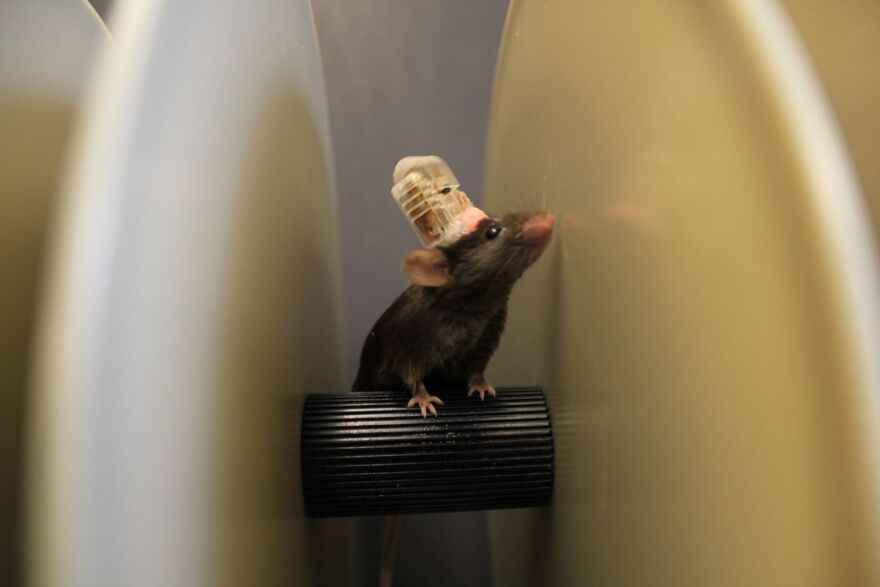A federal initiative to find cures for brain disorders is granting $3.8 million to Washington University researchers and their collaborators.
The group is studying how neurons respond to light by implanting fiber-optic threads the width of a human hair into the brains of lab mice.
“We’re able to get animals to do particular behaviors while this light is dialing up or dialing down particular activities,” said Dr. Michael Bruchas, a Washington University neuroscientist. “We can actually affect how they approach one another, how they interact.”
The light can reach deep into a mouse’s brain tissue to target specific areas for exact periods of time, with “scalpel-like precision,” Bruchas said.
In two separate grants from the White House's BRAIN Initiative, Bruchas and his colleagues at the University of Illinois and University of California-San Diego hope that by doing this they can find out which parts of the brain should be targeted for new drugs, and whether light could play a role in treatments for conditions like anxiety, depression, or chronic pain.
Application in humans, however, is very far off, Bruchas said. Many of the light-sensitive proteins they are studying in animals do not naturally occur in humans.
“There has to be a lot of headway made in what’s called gene therapy,” Bruchas said. “But I think the tools will help us understand the [brain’s] wiring better. That, in turn will help us develop other, druggable compounds or targets that will help relieve some of these disorders.”
Follow Durrie on Twitter: @durrieB.




